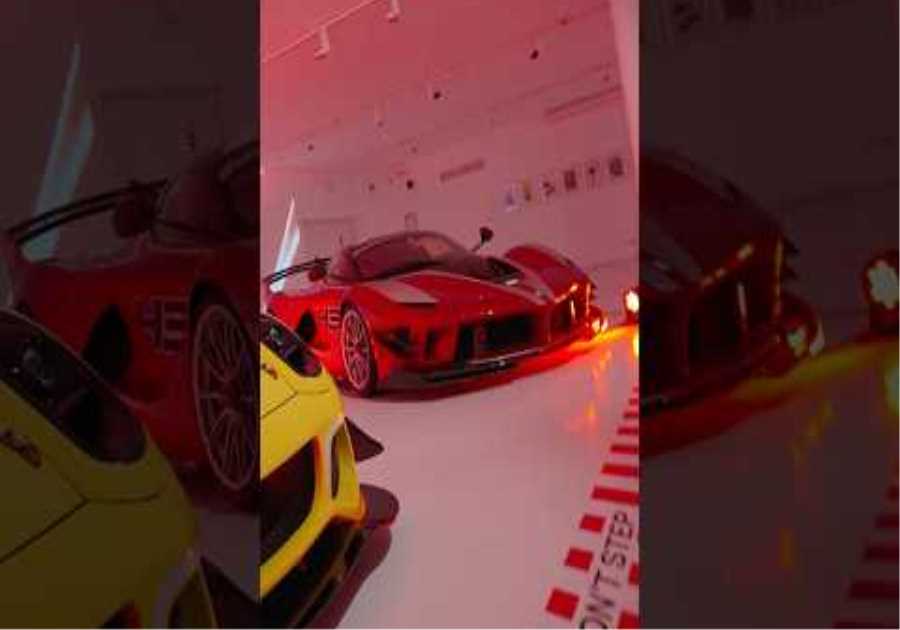
The design and manufacturing departments are inherently intertwined in all engineering outposts, and the collaboration needs to be especially precise in an industry such as Formula 1 where every gram and millisecond can affect performance in a grand prix.
At the McLaren Technology Center in Woking, England, that back-and-forth communication manifests in designers running up and down the stairs to the production floor. Soon, it could involve a down-the-lane car trip to the second manufacturing facility currently under construction.
But a new tool is helping render those tedious trips unnecessary. McLaren Racing was an early test partner of Cisco’s Webex Hologram, in which an object placed in front of a camera array can be digitally displayed in 3D by meeting attendees wearing augmented reality headsets around the world. Through those glasses—such as Microsoft’s HoloLens or the AR glasses made by Magic Leap—the object is replicated for close examination and annotated alterations.
“It’s really that moment, you can blur physical and digital, and it releases boundaries,” says McLaren head of commercial technology Edward Green, who admitted unleashing “quite a few expletives” upon first trying Webex Hologram “because it was genuinely the most impressive piece of tech I’d seen.”
During that first trial, a Cisco executive sitting in an office in San Jose passed a basketball toward the hologram pod’s camera bank, making Green flinch a continent and an ocean away. Green was so smitten that he ran to the meeting room next door to grab McLaren F1 driver Lando Norris to see it for himself. Norris, Green recalls, immediately began ruminating on ways to avoid physical attendance at press conferences and to see prototypes of his racing helmet throughout the design process.
When McLaren first installed the Hologram pod in its facility, Green says they deliberately chose a place that was out of the way so the novel tech wouldn’t be too disruptive. Within a couple hours, however, he says the production directors were clamoring for it to be integrated into their regular workflow, asking, “Why is that we’re not on the shop floor?”
Welcome to the grid at the #ItalianGP. 
pic.twitter.com/SQknRPs2iS
— McLaren (@McLarenF1) September 11, 2022
“You can collaborate with that object together so that the same person can actually see what the person physically in the room can see,” Aruna Ravichandran, CMO at Cisco Webex, says. “And you can actually manipulate the object, you can look under the hood, you can look at the engine. And so the main goal for us is, it’s about reducing the inefficiencies and cutting down the time in order to help the McLaren team.”
Traditional video calls and conferencing fall short of Hologram because “you can’t collaborate in this 3D space,” Green says. The Webex Hologram renderings can be annotated with CAD (computer-assisted design) drawings overlaid on top of the physical object. There could even be potential for such technology to eventually reach the garage on race day.
“As the technology advances and form factors change, absolutely [installing this] at the track would be really interesting,” Green says. “But today, it’s in manufacturing and in engineering. And I think the capture of the car may move to track-side in the future.”
You can collaborate with that object together so that the same person can actually see what the person physically in the room can see. And you can actually manipulate the object, you can look under the hood, you can look at the engine. And so the main goal for us is, it’s about reducing the inefficiencies and cutting down the time in order to help the McLaren team.
After all, Ravichandran says, one of the early use cases Cisco had for this tech was assisting field technicians doing repairs on, say, a cell tower. Mechanics for a race team face similar demands of time in troubleshooting.
The deployment of Webex Hologram builds on a partnership brokered earlier in the pandemic to help McLaren better engage fans. When the tech-forward racing group could no longer welcome fans or sponsors to the track, it turned to video with its own production of behind-the-scenes shows. That’s when Green jokes his job turned from full-time IT person to a 50-50 split between IT and TV producer.
Webex became the distribution partner for those produced shows but also for interactive video chats. One feature McLaren appreciated was the stage view that enabled fans to share their cameras on-screen as well.
“It was a more immersive experience,” Green says. “Rather than just those traditional webinars where you sit back and you see someone presenting the slides, you can see our drivers, [but you] could also see your fellow community of fans.”






